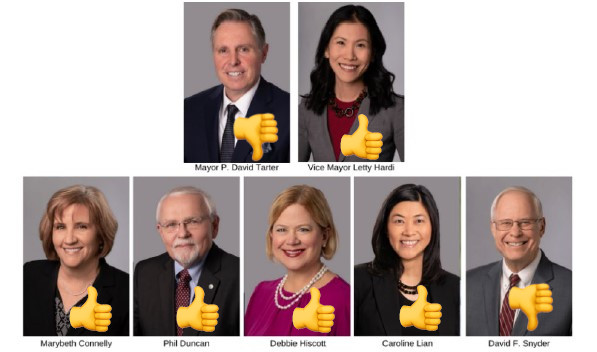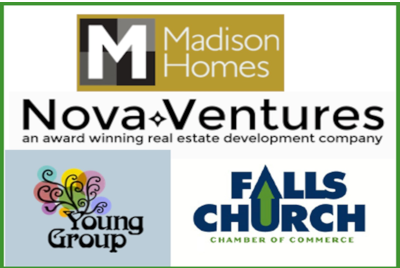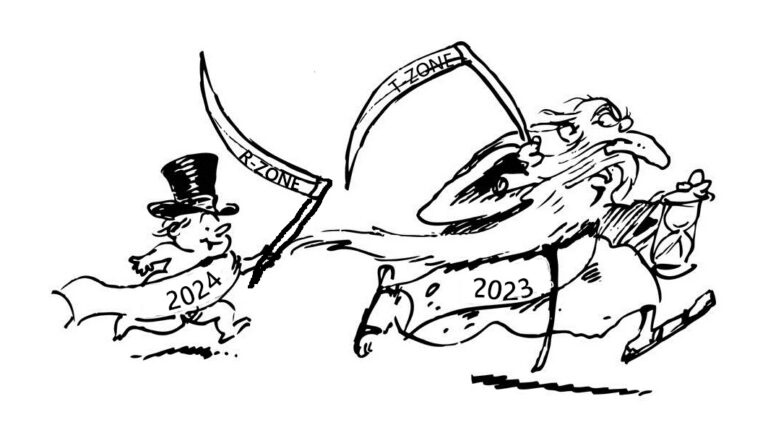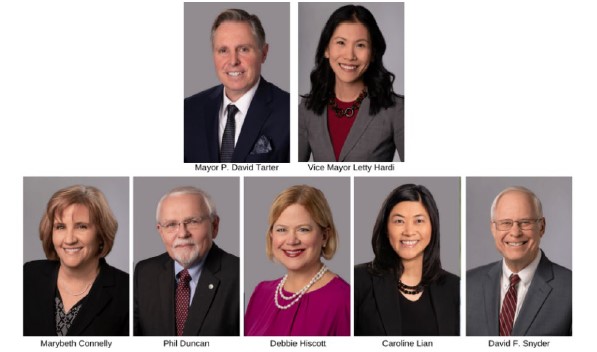Rebuttal: Let’s Really Spill The Tea On T-Zones!
Author: Edith Snyder
Falls Church Pulse offers a rebuttal of a cartoon video released by the City’s Office of Communications last week about proposed changes to transition zones. The video, highlighted in the August 24, 2023, edition of the weekly electronic newsletter, Focus on Falls Church, simplifies the issues involved and neither indicates persistent community opposition to nor continued developer influence on the proposed ordinance.
The Pulse’s response seeks to uncover the complexity and tradeoffs behind the T-Zone changes and is based on the documented evolution of the T-Zone proposal, City staff reports and recorded meetings, and citizen responses.
The City’s video, “T-Zones: 5 Things to Know about the Proposed Changes,” is available here.
A rebuttal to Falls Church City’s T-Zone video:
“5 Things To Know About The Proposed Changes”
City script (in italics) followed by the Falls Church Pulse rebuttal in blue.
Let’s spill the tea on T-Zones!
Here are five things you need to know about the City’s proposed updates.
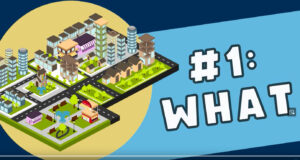
WHAT are T-Zones? They are Transition Zoning areas – the land between the City’s vibrant commercial districts and quieter single-family residences.
Transition zones, or T-Zones, are, indeed, intended to provide a buffer between the City’s commercial areas and residential neighborhoods. The proposed changes would shrink these areas by allowing buildings to be up to 50 feet tall and cover as much as 70% of the lots on which they are constructed.
The expanded envelope of the permitted structures would limit green space around these buildings, whether for residential or commercial purposes, effectively turning the restricted setback and outer edges of the neighborhoods they abut or face into all that remains of transitions.
Less than three percent of the City’s area, about 24 acres, is designated T-Zone.
These parcels are scattered throughout Falls Church’s 2.2 square miles, and each is unique, requiring tailored treatment that the proposed ordinance does not provide.

WHY: The City’s population is projected to grow by 40% in the next 20 years. So far the City has addressed that by allowing the tear down of older single-family homes and developing larger mixed-use buildings. These proposed T-Zone changes can lead to other housing options, like townhouses and smaller condo developments, which are largely disallowed by the current Zoning Ordinance.
The “why” asserted by the City is circular thinking and not the reason for the proposed changes to the T-Zone code. The City plans to build more housing in T-Zones and elsewhere, thus leading to the projected population growth, which is currently based on 2019 data.
With Founders Row, Broad & Washington, West Falls, and Founders Row II (Modera) all under construction or nearly finished, we can anticipate nearly 1,800 new apartments, condos, and senior living units, including nearly 100 affordable dwelling units, to be added to our housing stock by the end of 2024. An additional 440 units at the Virginia Tech site, 900 units at the West Falls Church Metro site, and over 230 at the proposed Quinn/Homestretch site on South Washington Street could lead to nearly 3,400 new housing units either within or in close proximity to the City within the next few years. (Read Mary Chaves’ analysis Falls Church City Mixed Use Development Projects.)

WHERE: There are two designated T-Zone areas in the City: T-1 and T-2. Only T-1 is proposed for amendment. T-Zone 1 is primarily located on North Washington Street and on Park Avenue. Existing uses include the Columbia Baptist Church, Christ-Crossman Church, Sunrise of Falls Church, single-family houses converted to commercial use, and residential townhouses.
T-1 lots are primarily, but not exclusively located on these streets. The existing uses included in the City’s video are not likely to change in the near term, except for the single-family houses, four of which are historic, that have been converted to commercial use.
Further, Park Avenue has been designated by the City as a “Great Street” with plans to make it more walkable and bikeable. The proposed ordinance with its greater heights and lot coverages and limited setbacks and tree canopy requirements will make it more challenging to achieve that goal. (Read our posts on the Park Avenue Great Streets Project.)

THE PROCESS: The process started in February 2021 with staff researching options for smaller all-residential development. Over two dozen public meetings were held through the years, including City Council first considering the proposed changes in May 2022, then again in February 2023, and again in August 2023.
While some members of City Council initiated the T-Zone discussion early in 2021, the City only seriously engaged the public in this process at a November 2, 2022, Planning Commission hearing, and interested citizens packed the room. Since then, 100 or more City residents have turned out to express their concerns at a February 9, 2023, forum hosted by the League of Women Voters, a March 21, 2023, question-and-answer session in City Council Chambers, and a July 17, 2023, walking tour of Park Avenue.
Hundreds of citizens have petitioned the government to take a closer look at the proposed changes, with many speaking at City Council and Planning Commission meetings and sending in extensive and thoughtful comments and ideas for improving the T-Zone code. Yet, there still has been no public two-way dialogue between elected and appointed officials and the residents they represent. Citizen concerns have had little impact on the substance of the proposed ordinance, while 11th-hour developer comments significantly influenced the Planning Commission’s February 15, 2023, recommendations to City Council by maximizing height and lot coverage and minimizing setbacks from the street.
Meantime, the substance of the proposed ordinance has continued to shift as have the objectives of this initiative. Staff only introduced the foundational concept of density as measured by units per acre on June 5, 2023 – less than three months ago. Successive staff T-Zone proposals on July 10 and August 7 have made allowable development still more dense, with the current proposal permitting up to 60 units per acre, a far cry from townhouses, and more dense than the Broadway condominium on West Broad Street.
There is no mention in the video of affordable housing for low-income residents, since no affordable dwelling units are required for most residential construction, except at higher densities, and the proposed target is for units that cost $800,000 – $1 million each.
Council’s second reading and anticipated adoption is set for September 2023 – check the T-zones webpage for exact dates.
This statement blatantly preempts any recommendations the Planning Commission might make to the City Council that could require additional work or a new first reading.
Drafting the proposed T-Zone changes involved City Council, the Planning Commission, collaboration from City departments like Planning, Public Works, and Housing and Human Services, and getting community feedback.
Community feedback has not been incorporated in the final proposal, and local developer influence and involvement in this process through the Economic Development Committee remains unacknowledged. In addition, the City has ignored and buried the concerns of its own Arborist regarding the importance of lesser lot coverage and increased setbacks to enable the growth of healthy trees. (Read the City Arborist’s Letter post.)

DIVE DEEPER AND LEARN MORE: Staff researched and considered a number of elements when drafting the proposal over these 2+ years, including residential and commercial uses, urban design aspects like building height, environmental considerations like stormwater and historic preservation, and the application review process.
Staff researched, considered, and rejected those elements that developers said they did not want. The proposed ordinance maximizes the building envelope and fails to address stormwater or historic preservation in any meaningful way. The City has acknowledged that a separate ordinance would be required to protect historic structures in T-Zones, but there is no draft or date for such a law’s enactment.
The central feature of the new T-Zone code is to allow developers to build up and out by-right rather than be subject to more rigorous City review and oversight. In addition to relaxed oversight of residential building, there will be virtually no City oversight over open-ended, by-right commercial construction, except at the highest coverage and heights. The City is essentially opening a free-for-all for construction on T-1 lots.
You can learn more about T-Zones at www.fallschurchva.gov/TZones.
We also invite readers to explore the T-Zone posts on the Falls Church Pulse website for a true deep dive into these issues.


